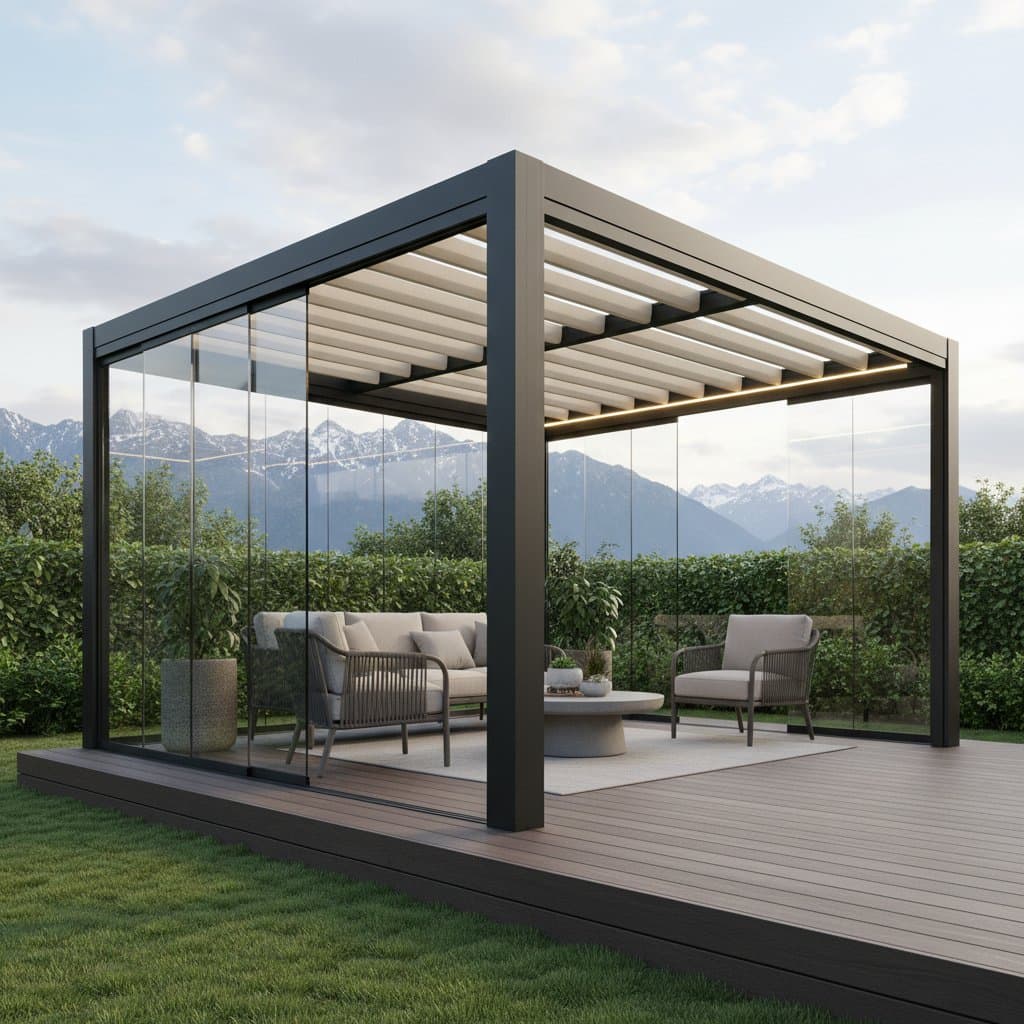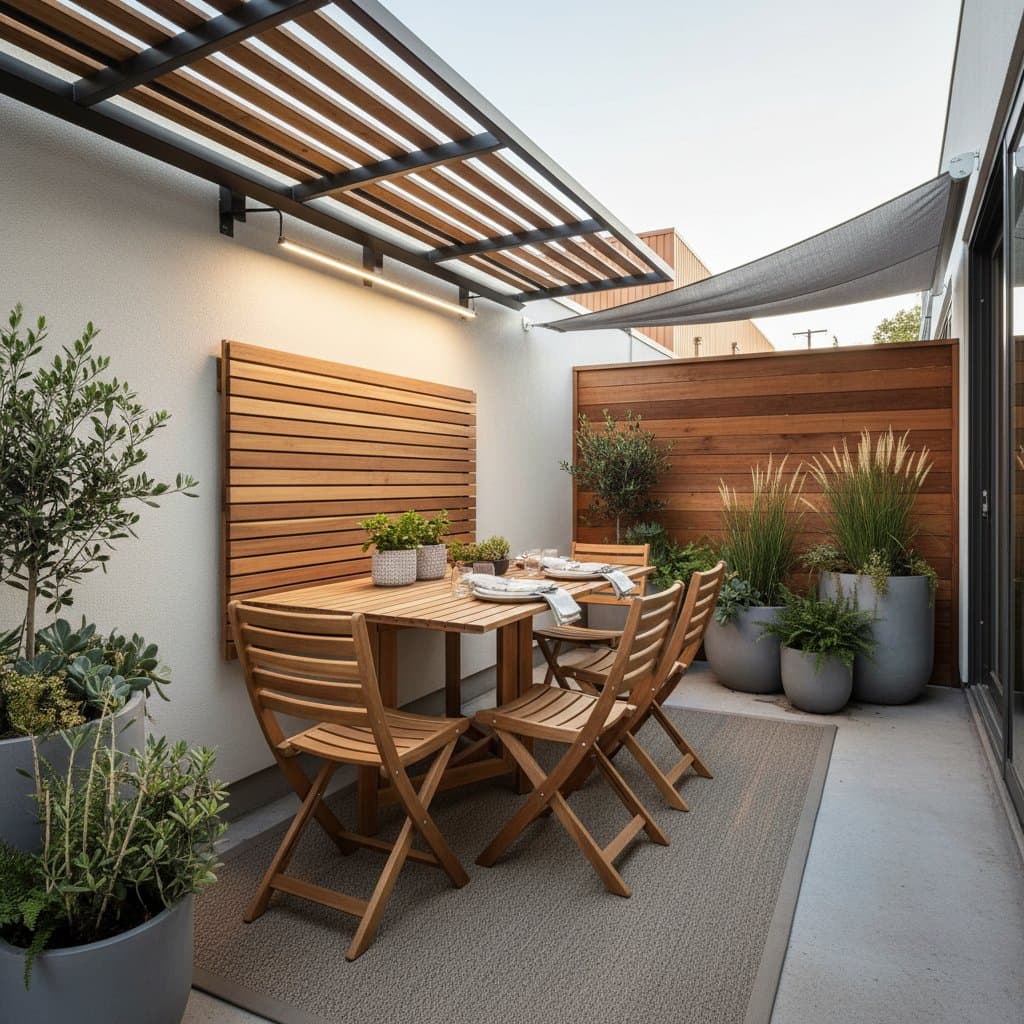Step 5: Test the Fold Mechanism
After completing the assembly, open and close the table multiple times to evaluate its performance. Pay close attention to any squeaks, unusual noises, or resistance in the movement, as these often indicate that bolts require adjustment for optimal tightness. To enhance smoothness, apply a light coating of silicone-based lubricant directly to the hinge joints, which reduces friction without attracting dirt over time.
Testing ensures the mechanism operates reliably under regular use. If stiffness persists after lubrication, inspect the alignment of all components and make minor corrections as needed. This step prevents future frustrations and extends the lifespan of your investment.
Step 6: Add Seating and Accessories
Select foldable chairs that align precisely with the table's height, typically ranging from 28 to 30 inches, or 71 to 76 centimeters, to promote comfortable seating postures. Incorporate cushions filled with quick-dry foam and equipped with removable, machine-washable covers to withstand outdoor exposure. For ambient lighting during evening gatherings, install a compact solar-powered lantern or a clip-on LED light that attaches securely to the table edge.
These additions transform a basic setup into an inviting dining area. Consider weather-resistant fabrics for cushions to minimize fading from sunlight. Accessories like these not only boost functionality but also personalize the space to suit your lifestyle.
Safety Tips
Position any electrical cords well away from the folding zones to avoid pinching or damage during operation. Adhere strictly to the manufacturer's specified weight limits to prevent structural failure. For installations on elevated balconies, employ railing clamps certified for outdoor conditions and capable of supporting the full load.
Secure the furniture by folding and locking it firmly before anticipated strong winds or storms approach. These precautions safeguard users and preserve the integrity of the installation. Regular safety checks reinforce a worry-free outdoor experience.
Troubleshooting
Table sags or tilts: Begin by tightening all hinge screws with an appropriate screwdriver to restore even support. If the issue continues, install an additional support bracket beneath the table's center, ensuring it matches the material for seamless integration.
Wall anchors pull out: Upgrade to anchors with a larger diameter or switch to toggle bolts designed to bear at least 75 pounds, or 34 kilograms, for superior holding power in various wall types. Verify the wall's composition before selection to match the hardware correctly.
Paint or finish peels: Gently sand the affected area using 220-grit sandpaper to create a smooth surface, then apply a fresh layer of outdoor-rated sealant. Allow a full 24 hours for complete drying before attempting to fold the table again, which prevents adhesion problems.
Chairs wobble: Examine all rivets and hinge pins for signs of rust or wear, and replace any compromised parts immediately with corrosion-resistant alternatives. Tightening or lubricating minor looseness often resolves instability without full replacement.
These solutions address common challenges efficiently. Addressing issues promptly maintains the setup's reliability and appearance.
Maintenance
Perform a monthly cleaning of the table surface with a solution of mild soap and warm water, followed by a thorough rinse. Steer clear of abrasive or harsh chemicals, which can erode protective sealants and accelerate deterioration. For wooden elements, apply a natural oil treatment twice per season to seal the grain and avert cracking from moisture fluctuations.
Metal tables benefit from a thin application of carnauba wax post-cleaning, which forms a barrier against corrosion while enhancing shine. Every few months, inspect and tighten hinge screws, as environmental vibrations gradually loosen them. Store spare screws and washers in a dedicated, labeled container alongside your basic tools for quick access.
Consistent maintenance routines preserve both aesthetics and durability. These practices ensure the furniture remains functional through varying weather conditions.
Storage
When folding the table for non-use, engage the latch or fastening strap securely to eliminate any risk of unintended opening. Stack chairs vertically along the wall or suspend them from sturdy hooks rated to hold a minimum of 20 pounds, or 9 kilograms, per chair to conserve floor space.
Protect the assembled unit with a breathable, waterproof cover that allows air circulation while repelling moisture, thereby deterring mold growth. During winter months, if feasible, relocate the furniture to a dry indoor location such as a storage closet or beneath a bed. Prior to storage, lightly oil all hinges to inhibit rust formation during periods of inactivity.
Proper storage extends usability across seasons. These methods protect against elemental damage and simplify seasonal transitions.
Budget and Time
A complete fold-away dining ensemble typically ranges from $120 to $350, influenced by choices in materials, dimensions, and brand quality. Wall-mounted options prove more economical for those with existing tools, often requiring minimal additional purchases. Freestanding metal configurations, while higher in initial cost, offer quicker assembly and portability.
Allocate approximately 1 to 2 hours for installing a wall-mounted model, accounting for precise measurements and secure fastening. Freestanding tables assemble in under 30 minutes, ideal for beginners. Ongoing maintenance expenses remain minimal with routine cleaning and oiling, avoiding costly repairs.
Planning finances and time upfront streamlines the project. This investment yields long-term savings through enhanced space utilization.
Seasonal Reminders
Spring: Thoroughly clean all hardware components, reapply oil to wooden surfaces, and verify the stability of anchors to prepare for active use.
Summer: Ensure cushions remain dry after exposure and fold the table promptly following each session to mitigate ultraviolet damage.
Fall: Conduct a detailed inspection for rust spots or loosened joints, addressing them before transitioning to storage mode.
Winter: Relocate indoors if possible, or apply a full protective cover to shield against freezing temperatures and potential warping.
Adopting these seasonal protocols sustains safety and preparedness. Simple actions throughout the year maximize enjoyment.
When to Call a Professional
Engage a licensed contractor for installations involving concrete, stucco, or brick surfaces, or when the balcony railing forms part of a communal building framework. Professionals assess critical factors such as the surface's weight-bearing capacity, recommend suitable anchor varieties, and evaluate potential drainage or water accumulation near the site.
Expert involvement prevents structural risks in complex scenarios. Consult local regulations to ensure compliance with building codes.
Key Takeaways
Fold-away tables offer versatile solutions for compact urban spaces, freeing up to 20 square feet for other activities. Prioritize durable materials and secure installation to achieve lasting performance. Regular maintenance and safety adherence guarantee a reliable outdoor dining haven.
Making It Happen
Initiate your project with these practical steps:
-
Measure available space accurately and draft a simple sketch illustrating the table's placement.
-
Select materials suited to your location's sun and precipitation levels for optimal resilience.
-
Schedule a dedicated weekend slot to handle installation and initial testing.
These actions bring immediate improvements to your outdoor area, fostering effortless entertaining year-round.






